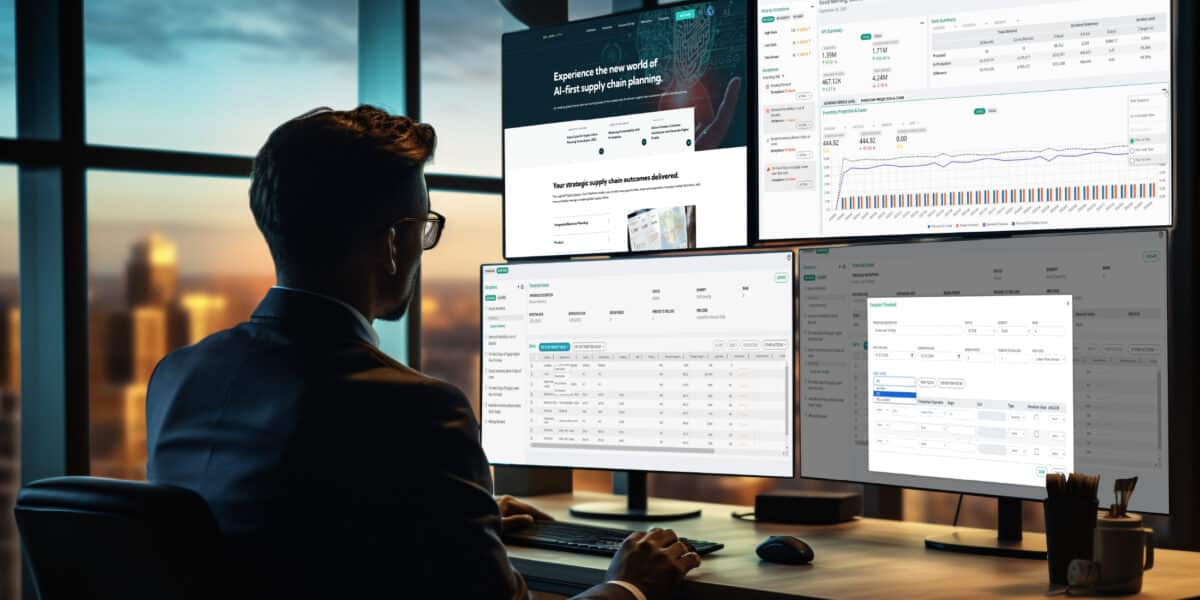
 Conundrum: 1) a riddle whose answer is or involves a pun; 2) an intricate and difficult problem
Conundrum: 1) a riddle whose answer is or involves a pun; 2) an intricate and difficult problem
I have heard a number of supply chain professionals proclaim that their companies should stop forecasting product demand due to poor forecast accuracy. If we could only get closer to true end-customer demand the company could ship exactly what is needed, where and when. It’s the old Push — Pull argument. And I agree that some companies can operate leaner if they move to a pull distribution strategy based on actual customer demand. However, what is often overlooked is that moving to a pull strategy does not eliminate the need for a forecast. Most likely the company will still need to forecast raw materials, purchased components, and/or sub-assemblies to be able to meet customer demand. In most cases the lead time for the materials to build a finished product is longer than the lead time a customer is willing to wait for that finished product. Here in lies the conundrum.
What’s really driving supply chain professionals to throw up their hands and proclaim the worthlessness of product forecasting is their frustration with low levels of forecast accuracy. Given that most companies will have to forecast customer demand at some point in their supply chain, i.e., finished goods, sub-assemblies, raw materials, etc., it makes sense to put the frustration behind us and focus on improving forecasting capabilities. I have seen companies from a variety of industries struggle to overcome common barriers to improving product forecast accuracy. Let’s explore a few of these barriers below.
Financial Impact
First, you have to overcome the barrier of getting approval for forecast improvement projects. C-Level executives show greater interest when a positive relationship is seen between an investment and increasing shareholder value. To gain support for improving forecast capabilities, supply chain managers must show the relationship between forecast accuracy and shareholder value. They must speak in the terms the executive team thinks in (revenue, growth, service, value). One way of doing this is through the use of the DuPont Financial Performance Model which can help you show how improvements in forecast accuracy can increase sales revenue and reduce inventory, both of which lead to higher profits and increased shareholder value.
Supply Chain Talent
Another significant challenge is in finding and retaining demand planning expertise. Creating an accurate forecast requires skills in statistics, knowledge of the company’s products, customers and markets, and experience in making sense from lots of conflicting data. This combination of expertise is hard to find on the market and just as difficult to build internally. A company must put a premium on finding qualified forecasting professionals, providing business, system and professional training, and developing clear promotion opportunities to retain these critical resources.
Executive Leadership
The forecast process needs an executive champion. Solid leadership from above can prevent the argument of “whose forecast is the best” and “which one should be used.” An executive champion can create a vision and build consensus, advocate for the team, enforce consistent process and metrics, and directly lead improvement efforts that will positively impact both topline growth and bottom line profits. Such a leader sets the stage for dramatic demand planning process improvements to take place.
Spreadsheet Sabotage

Dynamic Models
Companies tend to use an inadequate mix of forecasting techniques. A recent study found that nearly 40% of companies use only one forecasting technique across all their products no matter the life-cycle stage, channels served or market dynamics. Best-in-class companies have the ability to apply a series of forecasting techniques, tuned to perform best at different phases of the product lifecycle. They exploit both available historical data and forward-looking market knowledge at each lifecycle stage. An advanced forecasting solution can automatically change forecast methods during a products lifecycle to maintain maximum accuracy from launch to end-of-life.
Best-in-class forecasting provides tangible business benefits, including lower inventory levels, shorter lead times, fewer out-of-stock events, increased perfect-order performance, and more successful new product launches. A comprehensive demand planning system managed by well-trained personnel and supported by an executive champion can supply a consensus forecast that all departments can use to develop their individual plans, while aggregating and disaggregating demand to create more accurate global forecasts over any demand horizon.


